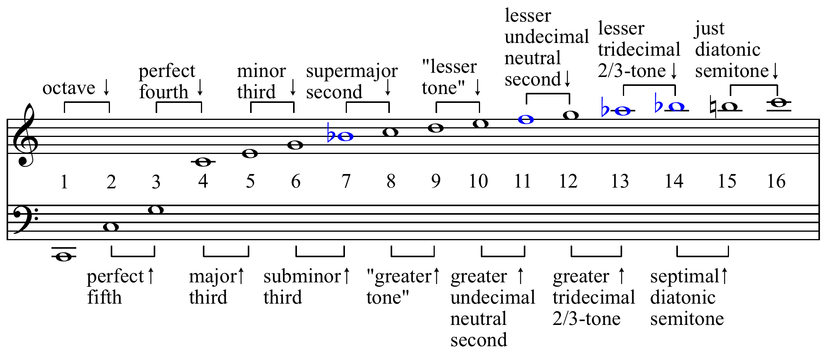Dr. Robert Greenberg talked about this in Understanding the Fundamentals of Music and I wanted to learn more about it. Here’s 2 references.
https://music.tutsplus.com/tutorials/quick-tip-the-overtone-series–audio-4672
Octaves and 5ths are primal intervals, natural to ancient music. The use of the third became prominent in the Renaissance and with composers such as Palestrina in the 1500s. Bach and his contemporaries began to exploit the 7th in the 16th and 17th centuries. The 9th didn’t become an important chord tone until the time of Wagner in the mid 19th Century, and the extended tones of #11 and 13th weren’t commonly accepted until the music of early 20th century composers like Debussy and Stravinsky.
The Wiki article is much more complex — it talks about how the harmonics that are integer divisions of the original string (or column of air) are different from the tuning system we use now (equal temperament). The little numbers above the notes indicate how many cents sharp or flat the integer harmonics are from modern tuning.
I remember Dr. Greenberg talking about Pythagoras (and his students) experimenting with a monochord and finding the ratios for octaves, perfect fifths, perfect fourths, and major and minor thirds. The Wiki article takes it further.
Yow. I wonder if this has applications to music that uses microtonal scales.
https://en.wikipedia.org/wiki/Harmonic_series_(music)



